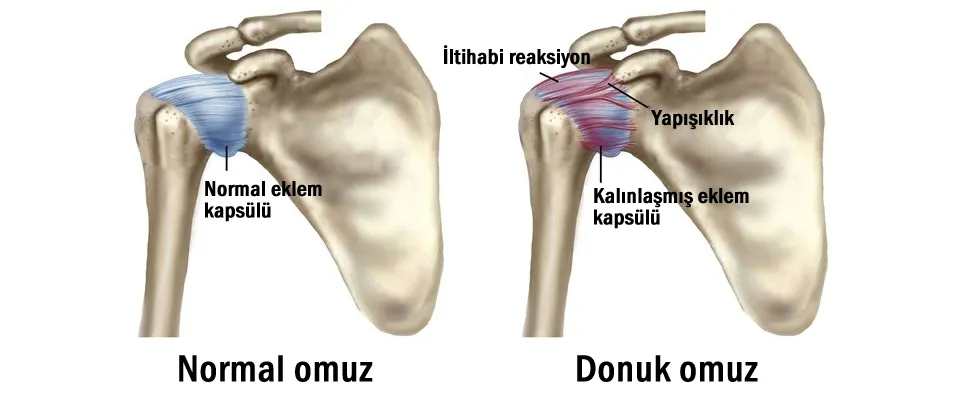Frozen Shoulder

Frozen Shoulder
Stages of Frozen Shoulder
Pain is the initial symptom, followed by gradual stiffness and restricted movement. Turning the hand towards the back becomes more difficult.
2.Stiffness Stage: 4-12 months
Pain gradually decreases, but stiffness and restricted movement continue and even progress. It becomes difficult to turn the arm outward.
This stage is a gradual recovery phase in which pain, stiffness, and restricted movement gradually decrease. In some cases, it can take up to 10 years for full recovery.
The duration of the disease varies from person to person after symptoms begin. It can last from 2 to 10 years. Untreated limited shoulder movements can result in permanent loss of shoulder movements in later life.
Frozen Shoulder Treatment
In most cases, medication may be sufficient to cope with the pain caused by frozen shoulder. However, sometimes a stronger pain reliever may be necessary.
This treatment involves transcutaneous electrical nerve stimulation (TENS), acupuncture, massage, hot and cold compresses, stretching techniques for relaxation, and exercises specifically for frozen shoulder.
These are corticosteroids applied directly into the joint. This can reduce inflammation and increase shoulder movement.
If movement is restricted, anesthesia may help your doctor perform a manipulation to improve shoulder mobility.
Surgery can treat severe movement loss by removing tight tissue or adhesions, repairing muscle tears, or releasing scar tissue. It’s done arthroscopically with small incisions and has a short recovery time. Early physical therapy starts after surgery, and daily activities can resume soon.
For detailed information about the Frozen Shoulder and for an appointment, click here.
